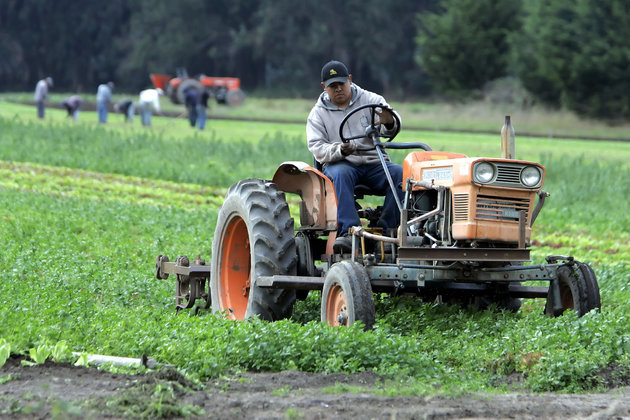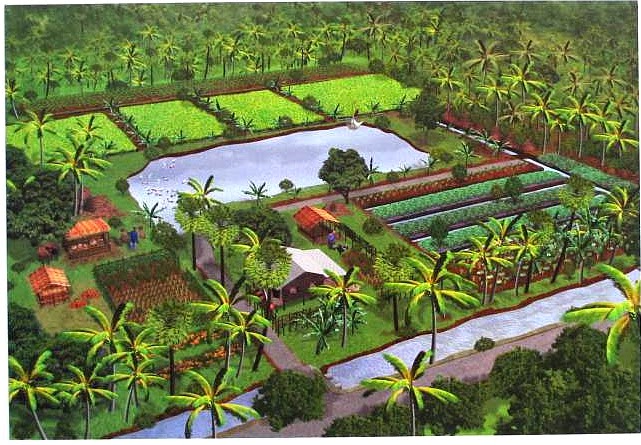When it comes to organic farming, many in the agricultural industry are on board in theory, if not in practice. And that's largely because of lowcrop yields.
For many years, the prevailing perception has been that organic farming — which avoids synthetic pesticides or fertilizers, antibiotics and GMOs, and aims to preserve natural resources and biodiversity — cannot produce the sort of yields needed to provide food for the world's population.
Comment: Debunking the myth: 'We need GMOs to feed the world'
An editorial in New Scientist stated that low-tech sustainable agriculture is increasing crop yields on poor farms across the world, often by 70 percent or more. This is achieved by replacing synthetic chemicals with natural fertilizers and natural pest control methods, while the Union of Concerned Scientists has pointed out that GE crops are failing to yield:
". . .GE soybeans have not increased yields, and GE corn has increased yield only marginally on a crop-wide basis. Overall, corn and soybean yields have risen substantially over the last 15 years, but largely not as result of the GE traits. Most of the gains are due to traditional breeding or improvement of other agricultural practices."Conversely, vertical organic farming is going high tech and big-scale. Utilizing the space equal to a small one-bedroom apartment, healthy food can be grown for a small family.
"Using a combination of new growing techniques and more sustainable energy practices, food markets around the world could soon benefit from the adoption of plant factories taking up a lot less space than traditional agriculture but boasting significantly more production."
While a new report from researchers at the Friends of the Earth admits that crop yields are, on average, currently smaller with organic farming than industrial farming, that doesn't have to be the case.
The report, released Tuesday by the D.C.-based environmental advocacy group, goes on to argue that crop yields shouldn't be the only metric by which we should evaluate any given crop's success.
In a conference call Tuesday, John Reganold, a professor of soil science and agroecology at Washington State University, said a crop's yield is just one of four metrics by which it should be considered sustainably productive.
Equally important, he argued, is whether a crop is environmentally safe, economically viable to the farmer and socially responsible — by paying its workers well, for example.
"For any farm to be sustainable, it must meet each and every one of these four sustainability criteria," Reganold said by phone Tuesday.
When organic farming practices are compared to conventional practices using all four of those metrics, the FOE report argues, the organic practices hold an advantage considering their resilience to increasingly pressing agricultural challenges, including climate change and water scarcity.
"Increasing the proportion of agriculture that uses sustainable, organic methods of farming is not a choice, it's a necessity," Claire Kremen, a conservation biology professor at University of California at Berkeley, writes in the report.
The report addresses another belief the organization characterizes as a myth — that increased food production is needed to feed the growing world.
Research published in the Journal of Sustainable Agriculture in 2012 found that the world's farmers already produce enough food to feed 10 billion people. The Economist reported similar findings in a 2011 report.

The reason for that gap, according to World Hunger: 10 Myths author and Small Planet Institute director Frances Moore Lappe, is that hunger has less to do with supply and more to do with poverty and a lack of equal access to land, water and other necessary resources.
Thus, any solution to the problem would also need to address these issues — but Moore Lappe argued conventional agriculture only exacerbates them. As an example of this, the report cited the poverty wages to immigrant farm workers, an estimated 67 percent of whom rely on some form of government assistance.
"The real root of hunger is a scarcity of democracy," Moore Lappe said Tuesday.
So what's the fix? Even though sales of organic foods are on the climb, organic farming still only represents about 0.7 percent of U.S. farms — so there's a long way to go toward these practices becoming more mainstream. In order to get there, the report suggested U.S. policymakers increase their spending on research, education and technical assistance for organic farmers.
While the USDA did increase its spending in this area in 2014, researchers argue it is not enough to keep pace with consumer demand as organic farms look to expand their operations and impact.




Just think what would happen to centralized industrial food if every small community had a hydroponic vegetable growing building.